Going global - Exporting Britain sustainably at Rushlight Show
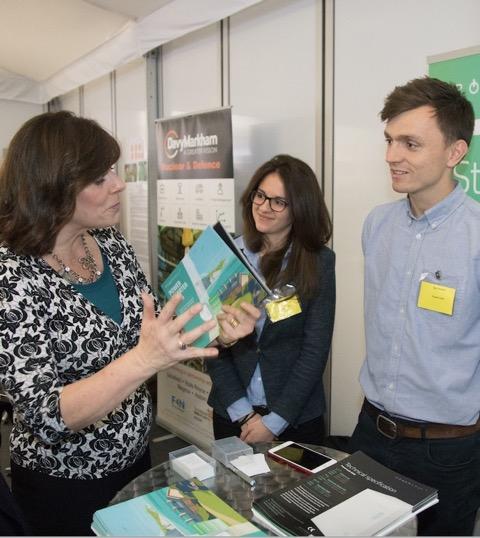

The ripples caused by Brexit reach throughout our society, and they recently washed up on the Cleantech and Circular Economy shores at the Rushlight Show held in London. However, Brexit isn’t the only show in town, and the 12-hour long event demonstrated that sustainable technology is thriving in the UK. The clear opportunity is to continue the transformation of Britain’s green economy, and then export the excellence globally.
The desire to look beyond Europe for trading was the clearest wave on show to the 600 entrepreneurs, investors, financiers, advisers and corporate customers in attendance. This was demonstrated by the proud announcement in a keynote from Minister of State for Energy and Clean Growth, Claire Perry, of a matched funding arrangement with the Republic of Korea which will see £6m available for the further development of energy storage innovations and technology.
With the Republic of Korea Ambassador to London Joonkook Hwang in attendance at the Show, the Minister heavily emphasized the similarities between the two countries, stating: “The challenges that we face are very similar in terms of energy”, continuing to say that “our understanding and access to the Korean markets will increase the fantastic opportunities for UK businesses to potentially gain market share there”.
UK leading the way
Looking at the success of the UK in taking climate action, Perry, who recently received a promotion to sit in the Cabinet, remarked: “Last year a PwC report said that there were only two countries in the world doing enough in terms of decarbonisation to meeting the 2-degree global target, and that was China and the United Kingdom”.
The Minister bullishly continued: “We have made real tangible progress towards a UK economy, and indeed a global economy, that is built around clean growth… [and]… the key thing for me is in solving that challenge for us, we create an opportunity to help other countries drive down their own emissions”. After acknowledging that President Trump has a different opinion on climate change to the rest of the world she sounded an upbeat note: “an unstoppable force is happening with the world”.
The Minister and Ambassador took a tour of the Rushlight Exhibition of over 60 businesses, talking with many of them, such as the pictured representatives from the multi award-winning power storage specialists, Powervault. Nick Wood, their Commercial Analyst (standing 2nd from the right), said: “The Minister was particularly interested in our how business was expanding; we have a rapidly growing British customer base, and already sell to Europe with plans to go global next year”.
In addition to the Minister’s keynote, the Exhibition and a UK Energy Breakfast Seminar there was also a Cleantech Conference, Sustainable Solutions Market Panel and Resourceful Conference. Therefore, the day wasn’t just about how Britain is developing low carbon energy solutions. An example was illustrated by one of the speakers at the Cleantech Conference, Nick Thompson, MD of Fiberight, who commented: “We have a circular bio-economy technology that takes household waste and can turn 80% of it into valuable resources. We are excited that within a year we’ll have a commercial plant operating in the USA, which will be able to process 180,000 tonnes of waste per year”.
Leaving Formula 1 to drive low carbon innovation
The Rushlight Awards ended the day, with many exciting start-ups represented. The keynote was Mark Taylor, a colleague of Claire Perry in the Department for Business, Energy & Industrial Strategy (BEIS), and is their Head of Programme Delivery, Science and Innovation for Climate and Energy. He explained that he left McLaren Formula 1 racing to join BEIS six months ago to be at the cutting edge of low carbon solutions development.
He observed: “There was nowhere near as big a change as I was expecting moving from F1 to government, coming across people with passion, drive and working hard to make a difference. What’s most important was entering an ecosystem of innovators who are committed to driving down consumption of carbon”. Taylor went onto explain that he was leading a £500m energy innovation programme, looking to develop solutions that drive decarbonisation. A two-minute interview with him can be seen here.
Winning all around the world
Amongst the Award winners were Solar Polar, who are a good illustration of a UK business creating a solution for the global market. Robert Edwards, their Chief Executive explained: “The Solar Polar system can provide refrigeration for vaccines and food storage. This is ideal for areas where there is unreliable or no grid electricity, but a huge need for cooling. This is both a great commercial opportunity, and our solution will help save lives by making food and medicines available much more consistently, all using the purely power of the sun.”
Winner of the Rushlight Environmental Management Award, Manchester based SteamaCo are also working in developing countries to help unleash the opportunity of renewables. “We bring utility-type capabilities to organisations looking to buy, sell, and save energy in the world's toughest markets - off-grid Africa, Asia and Latin America” commented their COO, Emily Moder. She continued: “Our smart meter is universal, easy to install and four times cheaper than comparable products. Today, SteamaCo technology connects thousands of homes and businesses in seven countries across the developing world.”
Photo caption: Claire Perry, Minister of State for Energy and Clean Growth; Ioanna Armouti and Nick Wood of Powervault
Over 100 Global Cities Get Majority of Electricity from Renewables


More than 40 cities worldwide are listed in an environmental report as running entirely on renewable electricity, and 102 are recorded as drawing at least 70 per cent from renewable sources.
Burlington, Vermont, is one of the cities depending exclusively on renewables, and four of the 102 named as relying on renewables for 70 per cent of their supply are in the US.
In addition, 58 US towns and cities have committed themselves to eventually sourcing all their electricity from renewables. They include big centers such as Atlanta and San Diego.
A swing to non-fossil sources in the US contrasts vividly with President Donald Trump’s widely publicized decision to withdraw his country from the Paris climate accord to keep this century’s global temperature rise within two degrees Celsius above pre-industrial levels.
Burlington’s proud boast is that its renewable electricity is affordable as well as clean. Energy prices in Burlington have not been raised in eight years. The city’s electricity comes from wind, solar, hydro and biomass sources.
Mayor Miro Weinberger said: “Burlington is proud to have been the first city in the United States to source 100 per cent of our power from renewable generation. We have seen first-hand that renewable energy boosts our local economy and creates a healthier place to work, live and raise a family. We encourage other cities around the globe to follow our innovative path as we all work toward a more sustainable energy future.”
Basel in Switzerland and the Icelandic capital Reykjavik are two other renewables-only cities.
Electricity in Basel is supplied by hydro and wind power through the city’s own energy company. Reykjavik receives its electricity from hydro and geothermal sources and aims to make all cars and public transport vehicles fossil-free by 2040.
The report, from the non-profit CDP, the former Carbon Disclosure Project, which drives businesses and governments to improve their environmental performance, compiled the facts and figures.
CDP, which was formed in London but has an international role, reported that the number of cities obtaining 70 per cent of their electricity from renewables had more than doubled from 42 in 2015. This category included Auckland, Nairobi, Oslo and Vancouver.
At the same time the UK100 network of local government leaders reported that more than 80 British towns and cities had set a totally clean energy target by 2050. This group included Birmingham, Glasgow, Manchester, Newcastle upon Tyne and 16 London boroughs.
The study reflects a worldwide intensification of climate change action and a sharp rise in environmental reporting and emissions reduction goals since the Paris agreement.
Kyra Appleby, CPD’s director of cities, said: “Cities are responsible for 70 per cent of energy-related carbon dioxide emissions, and there is immense potential for them to lead on building a sustainable economy. Reassuringly, our data shows much commitment and ambition.
“Cities not only want to shift to renewable energy, but – most importantly – they can. We urge all cities to disclose to us, work together to meet the goals of the Paris agreement, and prioritize the development of ambitious renewable energy procurement strategies. The time to act is now.”
On the corporate front, the CDP report highlights Apple, Google and Starbucks among more than 120 companies that are committed to securing all their electricity from renewables.
The report says: “CDP’s recent climate analysis found that since 2016 there has been a 36 per cent surge in companies with targets to generate their own renewable power.”
UK Pension Funds Grilled Over Financial Risks of Climate Change


The widespread misunderstanding of trustees’ duties may extend to others involved in this debate. Pension schemes are enormous investors and therefore it matters to policy makers how they invest.
Governments want pension schemes to invest in infrastructure projects that assist the country, and of course we all want them to invest in a way that assists the ecology as well as the economy of our country and our planet.
The problem is that trustees’ duties are fundamentally to provide the benefits under the pension scheme, and so in a defined benefit scheme this is about sustainable investment returns and sustainable capital value. In general, trustees are very well aware of these duties, although of course there are a variety of opinions as to which investments best achieve this.
Often when statements are made about trustees needing to understand their duty to invest in green investments because they are more financially viable, the concern that is really underpinning this is that trustees are not investing in a way that is good for the environment. That is not the pension trustees’ duty under the present law. Currently, they must invest in appropriate assets for the liabilities of their pension scheme, and it is a gross simplification of the investment process, and a statement of opinion as fact, to say that this means that they must invest in ecologically sustainable investments.
We are right, as a country, to be concerned that pension fund investment is not flowing into “greener” investments, but that is not because trustees do not understand their obligations, it is because they do. If MPs want trustees to invest in more sustainable investments, they should investigate changing the law to make this a requirement. It is not accurate to blame the trustees when they are simply complying with their obligations.
Government to Press UK Employers on Respecting Women’s Workplace Rights


The continuing failure of many UK employers to follow the discrimination regulations, especially the law on the rights of pregnant women and new mothers, is emphasized in a new government-backed study.
The report by the Equality and Human Rights Commission, the public body that enforces laws protecting employees’ rights, has renewed appeals to the government to help employers to understand their responsibilities and treat women in the workplace responsibly.
The commission’s researchers, assisted by the government business department, recorded that the number of women reporting illegal discrimination related to pregnancy and motherhood increased between 2005 and 2015.
Rebecca Hilsenrath, the Commission’s chief executive, observed: “We should all know very well that it is against the law not to appoint a woman because she is pregnant or might become pregnant.
“Yet we also know women routinely get asked questions around family planning in interviews.”
The researchers, who polled 1,106 business decision-makers, said many employers were “living in the Dark Ages”.
They found more negative attitudes among more than half of employers with up to 250 staff, and more than a third even of larger businesses thought it reasonable to ask women applicants whether they had young children.
Male and older recruiters were the guiltiest of negative attitudes.
The study hinted that the negativity was not entirely produced by employers’ prejudice. Half of managers aged 55 and older thought women who had had more than one pregnancy in the same job could be “a burden to their team”. Two fifths replied that pregnancy in the workplace created “an unnecessary cost”, and just over half said colleagues felt resentful towards women who were pregnant or on maternity leave.
Nevertheless, 76 per cent of the employers in the study agreed that “supporting pregnant women and those on maternity leave is in the best interests of the organization”.
Ben Willmott, head of public policy at the Chartered Institute of Personnel and Development, the UK body specializing in human resources and personal development, said: “There are still far too many employers who don’t understand or respect employment law as it relates to pregnant women and new mothers.
“Investment in manager capability is essential to challenge unlawful, short-sighted and unethical practice.”
Truth, authenticity and purpose in the 21st century business
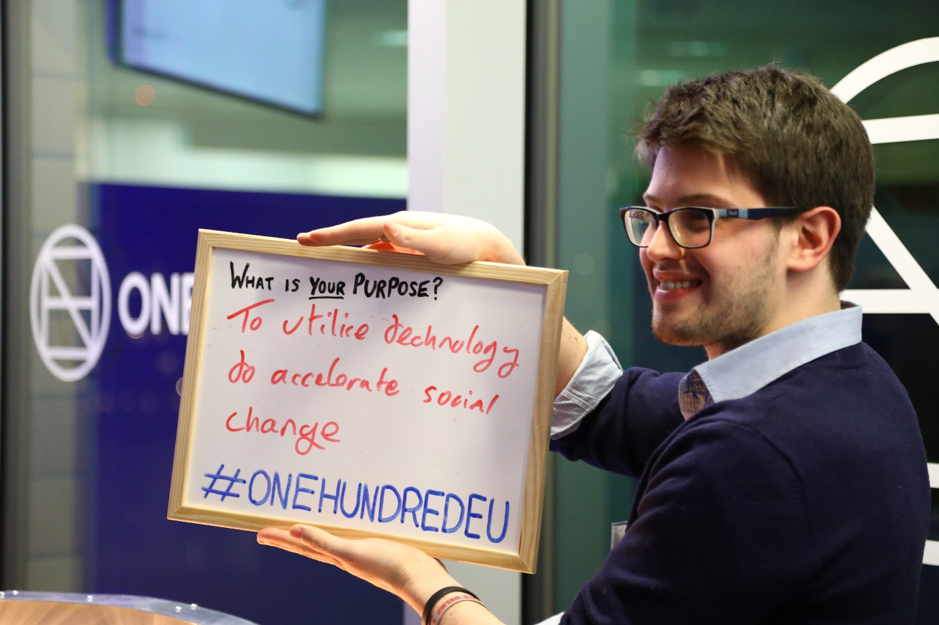
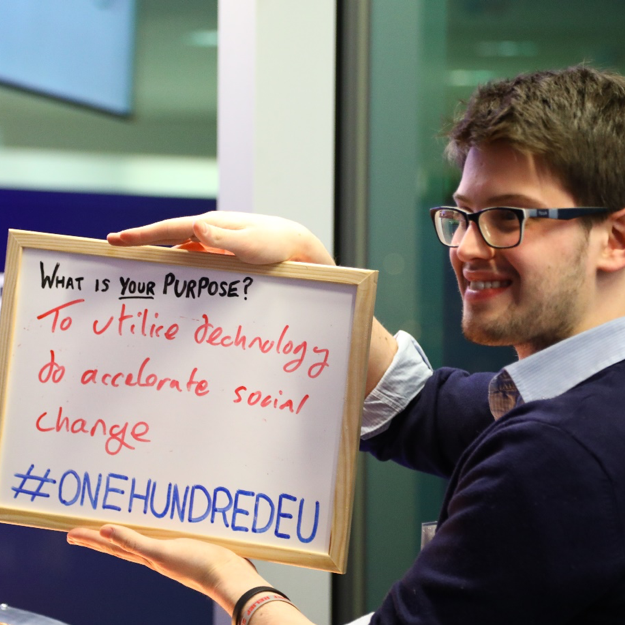
Nearly 50 years ago the birth of the internet in 1969 promised the utopia of a connected world, where the exchange of goods and ideas would herald a new era of efficiency, tolerance and growth. Some of these promises have been fulfilled, but many threats to society have also been revealed. How to deal with these challenges was the topic of conversation when ONE HUNDRED launched their European Hub at an event with a gathering of organisations and keynote speakers talking about business purpose in the digital age.
This era of 24 hr news and instant information flow has had unexpected consequences. Trust in our governments, business, “experts” and even charities is wearing thin as they seem to stagger from scandal to scandal. Failing public private partnerships, sexual harassment lawsuits, excessive bonuses and even the global financial crisis are increasing the focus on institutions that were once the bedrock of our society.
How can business respond?
Big business is often the key recipient of this un-focussed ire, with capitalism seen by many as the root of society’s problems. However, in times of increased debt and failing public services, business is also seen as the answer, with notable beacons like Elon Musk at Tesla picking up the ball that has been dropped by government and trying to envision a better future.
Perhaps as a response to this, the ONE HUNDRED is an agency that pulls together partners from across Omnicom Group to “empower organizations to make a sustainable impact by connecting their people, passion, and purpose”. At the 100 Europe Hub launch event their Managing Partner, John O’Brien MBE set the agenda for the day, calling for “clarity of purpose”, a noble effort to “help organizations turn their philanthropic ambitions into an actionable purpose, and drive tangible results”
With an increasingly savvy society becoming cynical about organisations motives, indiscriminately donating as a form of social tax isn’t resonating with consumers. Paul Drechsler CBE, President of the CBI and chair of Teach First opened the event with a positive view of business giving back to society, with examples stretching back to the early 1900s with Cadburys idyllic “Bournville”, built for the benefit of their workers.
Nowadays customer relationships are more complicated. The CEO of Unilever recently defied shareholders by threatening to pull their adverts from Facebook which he blames for “an environment where our consumers don’t trust what they see online”. For Paul Drechsler, “a lack of trust is a failure of leadership”, with trust a tangible risk which is becoming increasingly important in the boardroom.
Changing society, changing needs
When we talk about a changing society, it is the new generation of “digital natives”, born into the digital landscape of computers and social media that are driving the dialogue. Stephen Greene the CEO of Rockcorps talked at the event about how “collectively this is the most comfortable time to be alive, but the millennials don’t feel this way”. It is this group that is going to have to live with the consequences of the preceding 150 years of greed and overconsumption and they are worried about it. For this generation, Stephen says, purpose and authenticity is just something that they do and they expect their products, services and jobs to reflect this world view.
Ben Fletcher, President, of Clarks Shoes, UK & Europe spoke at the event about how he sees this challenge of truth and authenticity as an opportunity to galvanise staff, shareholders and consumers. As one of the largest employers in the UK, Clarks has set about defining their purpose as “comfort and movement” aligning with their key function as a producer of shoes, but also alluding to something broader and more central to their mission of contributing to a more comfortable and mobile society. This clarity of purpose gives organisations a narrative that not only feeds off but also contributes to society’s values creating this vital link between global supply chains and local communities.
Hyperconnected, but not connecting
In a hyperconnected world, it seems absurd that these links would be a problem. But to Dame Julia Cleverdon DCVO, CBE, of the National Literacy Trust, who also addressed the event, sometimes the smaller voices can be lost amongst the background thrum of information. Talking about how parts of the UK being left behind by globalisation, she described a small cake shop in Burnley that makes fantastic cakes, but struggles for business in an isolated marketplace. Instead of providing money from benefactors for the cake shop, Dame Julia connected them to the founder of Pret a Manger, who came in to Burnley to deliver a masterclass to the organisation. As a result of this, the cake shop ended up winning the contract for Pret carrot cake across the UK bringing in knowledge, wealth and jobs to the area – an excellent example of two organisations aligning in a mutually beneficial way.
So as society struggles with issues of trust in its core institutions, we need more examples like ONE HUNDRED making the vital connections between these large global corporations and local communities and asking questions such as; Do you know what your purpose is? Are you aligning your purpose with that of you consumers and reaching out to charities that share this?
New Leadership Model for Businesses with Purpose-Led Strategies
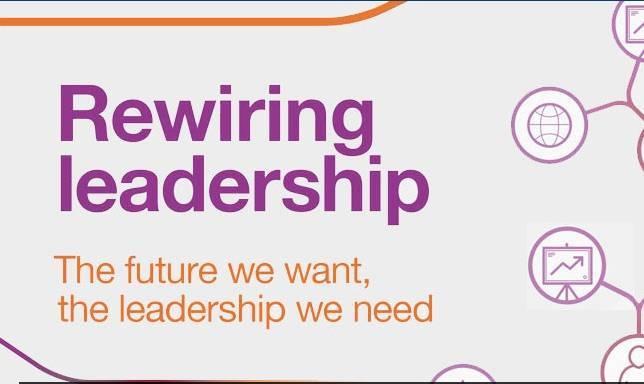
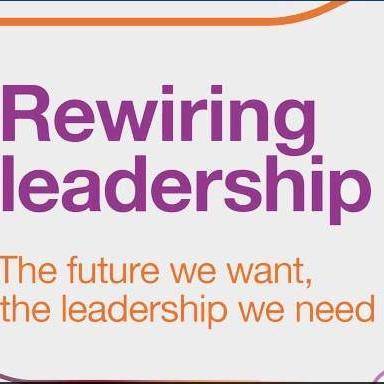
A framework has been created to help business to embrace ambitious, purpose-led, courageous leadership to shape the economy, instead of merely responding to problems.
The innovative guide has emerged from research by Cambridge University’s Institute for Sustainability Leadership, which concluded that businesses had always lacked the means to grasp the opportunities to change attitudes.
Climate change and wealth inequality are among threats to business and society for which novel solutions are available if business directors and executives take the lead, says the institute’s report.
Regulation by governments, which is slow and reactive, is not enough, says the report, Rewiring Leadership; the Future we want, the Leadership we need.
Businesses are told leadership to meet today’s challenges is required through all strata of an organization, and teams dedicated to leadership development and human resources are vital in recruiting, training and inspiring the right individuals.
The institute gives the example of Anglo American, the UK-based multinational, which has introduced a purpose-led strategy. The company’s new approach seeks new ways to make mining safer, more efficient and more sustainable and to minimize its environmental effects.
Desray Clark, the company’s head of leadership development, said: “This is crucial for a 100-year-old company like Anglo American and others in this sector.
“If we want to succeed in the long term we need to innovate, stay ahead of the curve, but we need to do this whilst improving the lives of our employees and society.”
Anglo American’s thinking is in line with the institute’s belief that businesses must cultivate leadership at all levels and that the diverse and complementary strengths and approaches within them must be fully used.
The institute says its guidance, called the Cambridge Impact Leadership Model, would give all leaders opportunities to nurture innovation, manage risk and exert influence wherever they work to reach society’s broader goals.
Clark observes: “We have learnt that this is the only way to ensure that we deliver against our purpose.
“In the past, like many organizations, we reserved leadership development for select senior leaders who would return from their training, ready to implement what they had learnt – but the system was not ready for them.
“Now we realize the importance of adopting an inclusive culture where leadership development is tailored for all employees. We realize that one size doesn’t fit all.
“If we want to deliver on our purpose, it is crucial that all of our 87,000 staff understand and value this purpose and, most importantly, are equipped to deliver the outcomes we need to thrive.”
The model stipulates that leadership is motivated by the conviction that business success goes together with delivering social and environmental outcomes, that it is built on thinking, values and practice to hit those targets, and that it continually reflects and adapts and holds itself accountable to deliver.
The report points out that the business case for ethical conduct benefiting society and the environment is evidenced by such companies as GE, Ikea, Natura, Nike, Toyota and Unilever, which are reaping the rewards of offering green products and services, now worth $100bn (£72bn, €80bn).
It says Unilever’s purpose-driven brands are growing twice as fast as the rest of its portfolio and if GE’s Ecomagination growth strategy was a standalone business it would be a Fortune 100 company.
Last word from Unilever chief executive Paul Polman: “I’m yet to meet a business leader who wants to see their business contribute to more air pollution, or more children going hungry, or more plastic in the oceans.
“Most are driven by an instinct to be a force for good in the world. But leading for the scale of change that is needed, as this report highlights, is not easy or straightforward.
“It takes courage, a willingness to put long-term needs ahead of short-term expedience and – above all – an ability to think systemically and to operate in new and collaborative ways. It can be done but it will indeed require a ‘rewiring’ of leadership.
“For those embarking on the journey, this report provides an ideal place to start.”
Prize offered for addressing modern slavery in UK


One individual is to be named as the UK man or woman who has done most to raise awareness to end modern slavery and labour exploitation.
The title winner will be announced at a black tie dinner held by the Top 100 Corporate Modern Slavery Influencers’ Index, established on March 1 by the UK international organization BRE and the strategic communications consultancy Sustain Worldwide.
The highest-scoring five in the index will speak about their activities and their next moves to expose and eradicate modern slavery and exploitation among UK businesses and their suppliers.
The government has estimated that about 13,000 people are in modern slavery in the UK today. In 2015 the authorities were alerted to more than 3,000 people, including nearly 1,000 children, as potential slavery victims, and Prime Minister Theresa May has called modern slavery “the greatest human rights issue of our time”.
The worldwide figure is even more frightening. Altogether 45.8 million people are said to be in modern slavery by the Global Slavery Index, the annual study by the Walk Free Foundation, whose aim is to end the menace and the accompanying human trafficking.
Dr Shamir Ghumra, sustainable products director at BRE, a centre formed to improve buildings and infrastructure through research and knowledge generation, outlined the problem: “Modern slavery has been described as a crime that is hidden in plain sight.
“Every day, in Britain’s towns and cities, across construction sites, factories, retail parks, high street shops, car wash forecourts and agricultural fields and shorelines, people are held against their will, exploited and trafficked.
“Criminal gangs are at the heart of modern slavery, using people as commodities to rack up profits and consign millions to modern-day slavery.
“The International Labor Organization estimates modern slavery is a $150bn (£108bn, €122bn) worldwide industry. Often unwittingly, due to a lack of awareness of who is working in their global supply chains, most organizations and companies in the UK are at risk of having modern slavery in their business.”
Dr Ghumra is prominent in the UK construction industry’s fight against modern slavery. Last year his BRE centre brought about a charter committing signatories to seek opportunities to uphold, preserve and promote the right of freedom in the industry.
The Top 100 Corporate Modern Slavery Influencers’ Index event will be held on September 26, hosted by Lady Young of Hornsey, an academic, former actress, cross-bench peer and human rights activist, who has introduced a parliamentary Bill proposing that public authorities and private businesses should both be covered by slavery laws.
The following day Lady Young will speak at the third annual Modern Slavery and Ethical Labour in Construction Leadership Symposium.
A separate report from the Shiva Foundation, which campaigns against slavery and trafficking in the UK, calls for immediate co-ordinated action to tackle exploitation in the hotel and hospitality sectors.
The foundation, estimating that 115,000 trafficking victims are trapped in Europe’s hospitality sector, urges the industry to use its collective purchasing power to drive change, to increase information flow between companies, to showcase its commitment to combat slavery and to give action priority. All organizations in the industry, it says, should submit a slavery statement.
A second appeal asks the UK government to bring together stakeholders to accelerate action.
The foundation, which is linked to Britain’s Shiva Hotels group, wants comprehensive guides for hotels and their suppliers to be published.
The report was presented at an event in New York City, co-hosted with the UN Trust to End Violence against Women.
Contributing bodies included the British Hospitality Association and the Stop Slavery Hotel Industry Network, whose members trade in more than 100 countries and employ 220,000 people.
Kevin Hyland, the UK’s Independent Anti-Slavery Commissioner, said: “Taking action on modern slavery and human trafficking is not just a moral obligation – it makes good business sense.
“Forced labour in company operations or supply chains has the potential to disrupt business, weaken investor confidence and cause significant brand damage.”
Photo: Flickr / Mark Falardeau
Gender Can be the Key to Unlocking Wider Diversity Challenges


I have been in business now for 30 years, and have always believed that women represent an incredibly powerful yet still untapped resource. The tragedy, is that there is no shortage of talent or ambition among women in the workplace. All too often however, women’s career progression can come to a standstill, the most notable being when they reach middle management.
Data from the UK shows that 73% of entry-level roles are occupied by women, yet this only translates into 34% of female managers, directors and senior officials. Despite many improvements in regulations and legislation, this proportion has only increased by one percentage point in the last six years. If we want to unblock our talent pipelines, we need stronger interventions at a business enterprise level to change workplaces and organisational cultures, and these changes must be led from the top.
Mars partnered with the UK Women’s Business Council last year to create ‘The Pipeline Effect’, a toolkit for enabling gender parity beyond middle management. In it we identify obstacles to women’s progress mid-career, of which a lack of role models was one. There is an important need for more female role models of all ages and levels who are approachable and relatable. We must have role models who are honest about their own their experiences and how they manage their trade-offs, as opposed to being portrayed as “superwomen” who ‘have it all.’
I’m thrilled that this month Mars is showcasing positive role models by shining a spotlight on some of our women in STEM. These amazing women are demonstrating first hand that it’s possible to have successful careers in areas which are traditionally underrepresented.
When I was growing up I had a number of role models. The most important was undoubtedly my mum, who encouraged all three of her children to do their best whatever their chosen path. In her 20’s, she enjoyed a successful career in HR, however sadly, had her employment terminated on marrying my father, under a rule which stayed on the statute books until 1973, called “The Marriage Ban”. This sense of injustice fuelled her with a belief that, should people want to, they should follow their careers, irrespective of personal circumstances.
During my teens my other role model was Mary Robinson, the first female Prime Minister of Ireland. She really inspired me at a pivotal moment in my life. I loved the fact that she got the job, although she wasn’t the natural successor. She totally broke the mould of women in leadership positions for me (this was the era of Dynasty, large shoulder pads and the “dog eat dog” mindset). She was softly-spoken, and a humanitarian, yet her authority was unquestionable; somehow she managed to be incredibly powerful without compromising her values.
Fundamentally, I believe that having a strong sense of your personal values enables you to find meaning in your work and perform at your best. If you can combine a role where your personal values match with a job, and a culture, you enjoy, you can deliver extraordinary results. Sharing common values does not mean surrounding yourself with people in your own likeness, in fact that can be incredibly dangerous; rather it can provide the bedrock to allow for even greater diversity of thought, gender and passport, in the knowledge you are all trying to strive for the same goal.
I have experienced that diversity enables better collective decision-making – at the moment my Global Management team has a strong gender split, and representation of nine different nationalities across 11 roles. The need for diversity in decision making is backed up by significant academic research including Scott Page, Professor of Political Science at the University of Michigan, and author of The Diversity Bonus, and can be especially useful when there are tough issues to conquer – my team is not afraid of challenging me and giving me honest feedback, which is often much needed!
Encouraging people to bring their authentic selves to work is the end goal of inclusivity. And by making our workplaces more inclusive we will ultimately be able to improve business performance.
Gender is the Trojan horse of diversity. If we frame our conversations about workplace diversity purely in terms of gender alone then we are only just figuring out part of the problem. But if we can make much-needed progress in gender diversity, eventually we can pave the way for future successes across all other diversity barriers and make our workplaces more inclusive.
Fiona Dawson is Global President, Food, Drinks, and Multisales, Mars Food
Photo: Mars
Call to Action by 200 Business Leaders to Support UK Women Entrepreneurs


An investigation into claims that women are being held back in business is to be conducted by the UK government.
It will be the first “serious review” into the funding gap that women believe is stopping them from becoming business leaders in Britain.
The Treasury has committed itself to examine the challenges and will produce a report this year, which it says will be a “call to arms” for the finance industry, making funders “sit up, take notice and act” in sweeping away the barriers encountered by women requiring investment.
The announcement after 200 business leaders, entrepreneurs, MPs and academics – many of them women – issued an open national newspaper letter on International Women’s Day urging the UK government to boost female entrepreneurship.
The signatories included Samantha Cameron, former UK Prime Minister David Cameron’s wife, who is a consultant with Smythson, the stationery, leather goods and fashion products company; Baroness Brady, better known as Karren Brady, vice-chairman of West Ham United football club; and retail consultant and broadcaster Mary Portas.
They emphasised that better access to funds for women would boost the UK economy.
Two thirds of women bosses told the newspaper’s researchers that investors and banks did not take them seriously, so that nearly three quarters of these female business owners had to start up using their own money.
The Entrepreneurs Network, formed to advise and support UK businesses, said men were 86 per cent more likely than women to be venture capital-funded and 56 per cent more likely to obtain angel investment.
The Federation of Small Businesses reported that Britain was missing out on more than 12 million new businesses because so much of women’s potential remained unused, and Deloitte, the multinational professional services group, calculated that aid for female founders could add £100m ($139m, €113m) to the economy in the next ten years.
One of the 200 signatories, Sarah Akwisombe, who runs a flourishing interior design business, recalled: “A friend of mine is a female founder who has an amazing software platform. She went to get venture capital and all they told her was that she needed to have a male co-founder to be taken seriously.”
By contrast, hope is offered by Robert Jenrick, Exchequer Secretary to the Treasury, the department playing a leading role in the review: “The greatest economic opportunity out there today is harnessing the talents of women that are currently untapped.
“This isn’t just a women’s problem. It’s a problem for everyone.”
More hope is offered by the UK broadcaster Sky. The group is introducing a paid programme, under which up to 1,000 women will be trained as engineers.
Photo: Flickr creative commons
Principles for future leaders navigating a changing world


Perhaps the biggest challenge facing leaders today is ensuring they are capable of navigating themselves and their organizations through a complex and rapidly evolving future landscape.
So how can leaders develop a “futurist mindset” and act accordingly?
Our forthcoming book The Future Leader’s Handbook, is intended to help address the challenges in practical terms. Here we highlight six key principles to ensure we avoid clinging to the past and instead lead into the future.
- Maintain a Constant Dialogue with Key Stakeholders – The leaders who are least surprised by the future tend be those with the broadest radar. They are always exploring both the issues of today and the factors that could shape and disrupt the future. They do their data gathering in the most natural way possible – by talking constantly to customers, prospects, suppliers, partners, shareholders, competitors, industry associations, business networks, advisors, industry analysts, commentators, journalists and – most importantly – their own staff. They probe for ideas and developments that could accelerate quickly and for weak signals of potentially big changes to come.
- Learn Something New Every Day, Then Watch it Grow. Don’t leave scanning just to the futurists. Allocate at least a couple of hours a week to exploring what’s coming next. Good future leaders learn quickly to establish the habits of a trendspotter and seek out new information at every possible turn. Subscribe to newsletters, follow thought leaders on social media, join webinars, and work daily to widen your media diet to include information that broadens your mind. Seek out diverse information sources and cultivate your findings on a link-sharing or social media page of your own. Watch and learn as your observations go from fringe to mainstream.
- Let it Go! Letting go of that which no longer serves us is critical to understanding and acting on the emerging future, and to appreciating and responding to the strategies and business models of new and existing competitors. Cherished assumptions and worldviews may need to be overturned, and long-held ideas and beliefs that have served us well may need to be retired. Our thoughts and beliefs can become a prison which prevent us from exploring and making sense of the world that’s unfolding. Also key here is acknowledging that our own ideas may not be the best ones for any given situation, and that they also have a limited time to be acted upon before they might be overtaken by developments in the world around us.
- Shape a Forward-Looking Culture. Look at the dominant behaviors and stories around the organization. Who do we make heroes of? Are we celebrating and rewarding those who scout out emerging change and seek to pioneer new ideas? How are we using public spaces – are staff surrounded by constantly changing images, icons, and questions of what’s next – or charts of past performance, safety notices, and policy statements? How is our appraisal and bonus system designed – are innovation and challenging the “system” encouraged and rewarded?
- Take a Sustainability Perspective. Sustainability has often been talked about in the context of the environment; climate change, wildlife protection, and natural resource consumption. Increasingly, we see organisations taking a much broader view of sustainability that incudes economy, business, and employment, eradicating inequality, developing ethical business practices, our communities and eco systems, education, and personal fulfilment. Perhaps we should be posing questions about how our businesses and our business practices support sustainability, rather than damaging it.
- Define and Redefine Organizational Identity. Fluctuating conditions in the business environment impact organizations in different ways. Being attentive to unexpected shifts in society gives future leaders an innate sense for when company culture, identity, and values should evolve. A future leader inspires others with a consistently positive attitude towards change.
Never has it been more important for those leading organizations to demonstrate a deep understanding of the forces, trends, developments, and ideas shaping the emerging future: which is why well-known companies are starting to hire futurists. Stakeholders want reassurance that our decision making is based on what’s next as well as what’s been.
A future leader needs the ability to bring people together around new ideas, and remain attuned to unique connections between ideas. The skills are learnable as they build on an innate tendency within human beings to look ahead.
Rohit Talwar, Steve Wells, Alexandra Whittington and Helena Calle are from Fast Future which publishes books from future thinkers around the world exploring how developments such as AI, robotics and disruptive thinking could impact individuals, society and business and create new trillion-dollar sectors.